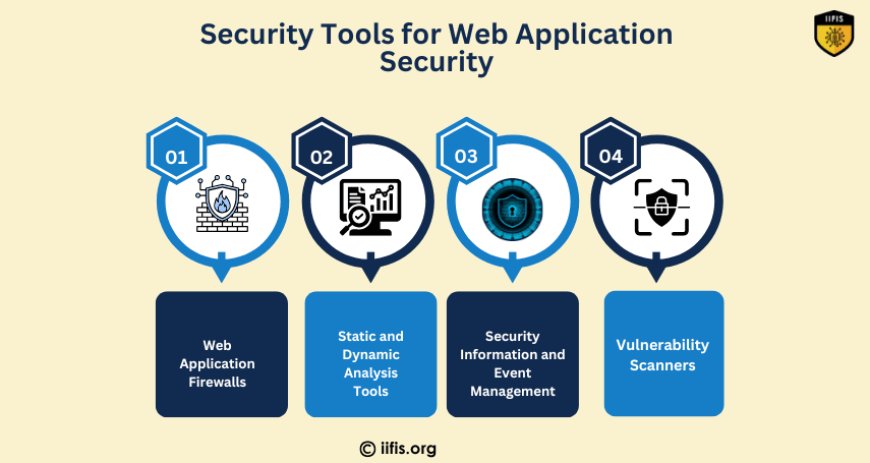Web Application Security: Key Concepts and Best Practices
Learn essential web application security concepts and best practices to protect your website from cyber threats, ensuring data safety and optimal performance.

Having experienced a web application security breach, I understand how damaging it can be. A small vulnerability in a frequently used website led to the theft of personal information, and my online accounts were targeted. Sensitive data was exposed, and the consequences were both frustrating and unsettling. This experience opened my eyes to how even a seemingly minor flaw in a web application can lead to significant risks and how crucial it is to implement strong security measures. Since then, I’ve become more cautious, using stronger passwords, enabling two-factor authentication, and keeping my software up-to-date.
This personal experience taught me that protecting your data is not just about being careful but also about ensuring the web applications you use are secure. Web application security is essential for safeguarding personal and financial information from cyber threats. It’s a reminder that proactive security practices are crucial in today’s digital world, where a single vulnerability can compromise everything.
What is Web Application Security?
Web application security involves measures taken to protect web applications from cyber threats that could lead to data breaches, unauthorized access, or service disruptions. These applications, built using technologies like HTML, JavaScript, and back-end programming languages such as PHP or Python, often store and process sensitive information. Therefore, securing them is critical to maintaining the confidentiality, integrity, and availability of data.
The goal is to ensure that your web application is resilient against attacks such as SQL injection, cross-site scripting (XSS), and denial-of-service (DoS) attacks, which are common vulnerabilities that cybercriminals exploit.
Common Threats to Web Applications
Understanding the most common threats to web applications is the first step in securing them. Some of the most prevalent threats include:
-
SQL Injection: This attack occurs when an attacker inserts malicious SQL queries into the input fields of a web application. This can lead to unauthorized access to a database and the exposure of sensitive information.
-
Cross-Site Scripting (XSS): XSS attacks involve the injection of malicious scripts into web pages viewed by other users. These scripts can steal session cookies, redirect users to malicious sites, or perform actions on behalf of the user without their consent.
-
Cross-Site Request Forgery (CSRF): In CSRF attacks, an attacker tricks a user into performing unwanted actions on a website where they are authenticated, such as changing account settings or making a financial transaction.
-
Denial of Service (DoS) Attacks: A DoS attack aims to overwhelm a server or network, causing it to become unavailable to legitimate users.
-
Broken authentication and session management: If an application does not securely manage user sessions and authentication processes, it opens the door for attackers to impersonate users and gain unauthorized access.
Why Web Application Security Matters
The consequences of neglecting web application security can be severe, impacting both businesses and users. Data breaches, unauthorized access, and service disruptions can result in:
-
Financial Losses: Cyberattacks can lead to direct financial losses due to theft, fines for non-compliance with regulations, and the cost of fixing vulnerabilities.
-
Reputation Damage: A security breach can significantly damage your brand’s reputation, eroding trust with your users and customers.
-
Legal and regulatory: Data protection regulations, such as GDPR, require businesses to implement robust security measures. Failure to comply can lead to fines and legal action.
-
Loss of Data Integrity: If attackers alter or delete critical business data, it can disrupt operations and lead to significant losses.
Best Practices for Securing Web Applications
To ensure the security of your web applications, here are some best practices to follow:
-
Use Strong Authentication: Implement multi-factor authentication (MFA) to add a layer of security beyond just a password. This reduces the likelihood of unauthorized access to sensitive areas of your application.
-
Input Validation and Sanitization: Always validate and sanitize user inputs to prevent malicious data from entering your application. This is essential for preventing attacks like SQL injection and XSS.
-
Keep Software Up to Date: Regularly update your application software, frameworks, and libraries. Many vulnerabilities are discovered after software is released, and updates often contain patches to address these flaws.
-
Use HTTPS: Ensure that all communications between the user and your web application are encrypted using HTTPS. This prevents attackers from intercepting sensitive information such as login credentials or payment details.
-
Implement Access Controls: define and enforce user roles and permissions. Limit access to sensitive information based on the principle of least privilege.
-
Regular Security Audits and Penetration Testing: Conduct regular security audits and penetration testing to identify vulnerabilities before attackers can exploit them. These proactive measures help in fortifying your web application's security posture.
Security Tools for Web Application Security
To effectively manage web application security measures, several tools can assist you in identifying vulnerabilities, monitoring traffic, and ensuring compliance:
-
Web Application Firewalls (WAFs): A WAF is designed to filter and monitor HTTP traffic to and from a web application. It helps block malicious requests and protects against attacks like SQL injection and XSS.
-
Static and Dynamic Analysis Tools: These tools analyze your code and runtime environment to identify vulnerabilities. Static analysis looks at the code without running it, while dynamic analysis tests the application during runtime.
-
Security Information and Event Management (SIEM): SIEM systems aggregate and analyze logs from various sources to identify potential security incidents. They help in the early detection of attacks and provide insights into security events.
-
Vulnerability Scanners: These tools automatically scan web applications for known vulnerabilities, ensuring your application is secure against common threats.

The Role of Developers in Web Application Security
Web application security is not solely the responsibility of security professionals. Developers play a key role in integrating security into the application development process. By adopting a security-first approach, developers can ensure that their applications are built with security in mind, reducing the risk of vulnerabilities in the final product.
-
Secure Coding Practices: Developers should follow secure coding practices, such as using prepared statements for database queries and avoiding the use of hard-coded credentials.
-
Code Reviews: Regular code reviews help identify potential security flaws early in the development process.
-
Security Training: Developers should receive ongoing training on the latest security threats and best practices to keep their skills up-to-date.
Future of Web Application Security
As cyber threats evolve, so does web application security. With the increasing use of cloud computing, IoT, and AI, the attack surface for web applications is expanding. However, advancements in security technologies such as machine learning and automation are providing new ways to detect and mitigate threats faster.
The future of web application security lies in adopting a proactive approach where security is integrated into every stage of the development lifecycle, from design to deployment. With continuous innovation and a collaborative effort between developers, security teams, and users, we can build a safer and more secure web.
Web application security is a critical aspect of protecting both your business and your users. By understanding common threats, following best practices, and leveraging security tools, you can safeguard your web applications from cyberattacks. Remember, the key to security is staying vigilant and proactive. Invest in security measures now to prevent costly and damaging breaches in the future.























